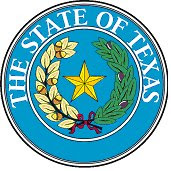I recently purchased a very rural piece of property. The farm was 87 acres and had been used for generations as a producing farm. The former owner was aged and unable to maintain the farm. The price was right and negotiable, and so were the other prepper retreat criterion. The area has…
· Plentiful water--preferably spring fed or an artesian well. (Pumped well water would be an inferior second choice.)
· Good exposure for gardening and photovoltaic’s.
· Temperate climate that offers a lengthy growing season.
· Plentiful game and the opportunity to hunt it.
· Likeminded neighbors.
· Not on a flood plain.
· Southern exposure.
· “Panoramic views.” This usually means a hilltop location with defendable terrain.
· A low crime, socially conservative, practicing Christian population, diverse and healthy local economy. (See the City Data web site to do your research on demographic information.)
· Remote area that is not near population centers and is not in the path of real estate developers.
· Look for property that has an existing house, even if it is old, it can most often be modernized.
· Low housing costs. As discussed in detail in some of my previous blog posts, don’t overlook examining as many factors as possible including home and car insurance rates, property taxes, and so forth. This useful Internet tool compares cost of living in two cities.
· My personal preference is to select a retreat in a mixed farming/ranching/timber region in low-humidity area.
Alone I could not afford to buy this land outright, and I did not want to go into debt to purchase the property. So what to do?
In my church there are five very middle class families that are paying attention to the state of our nation’s fiscal policy. We have been prepping for some time and longed to extend our preparations to a place where we could retreat if the need ever presents itself.
We began shopping together, looking for the perfect place. It took some time but eventually the right place was found. When it became evident that the farm was what we were looking for, we pooled what money we had, and bought it. This was a good solution for our group; however I would not make this kind of arrangement with just anyone. The people I partnered with…
· Have a common world view. (Biblically, politically, and socially conservative.
· Have complementary skill sets. (Engineer, Attorney, Registered Nurse, Chemist, Minister, Farmer)
· Are mature enough to work through problems.
· Each of us have a deeded parcel of the property that is uniquely our own.
· Each are hardworking, self motivating, people.
If you would like to get out of dodge when TSHTF but can’t afford to do so? Consider creating a partnership with likeminded friends.
CK in







